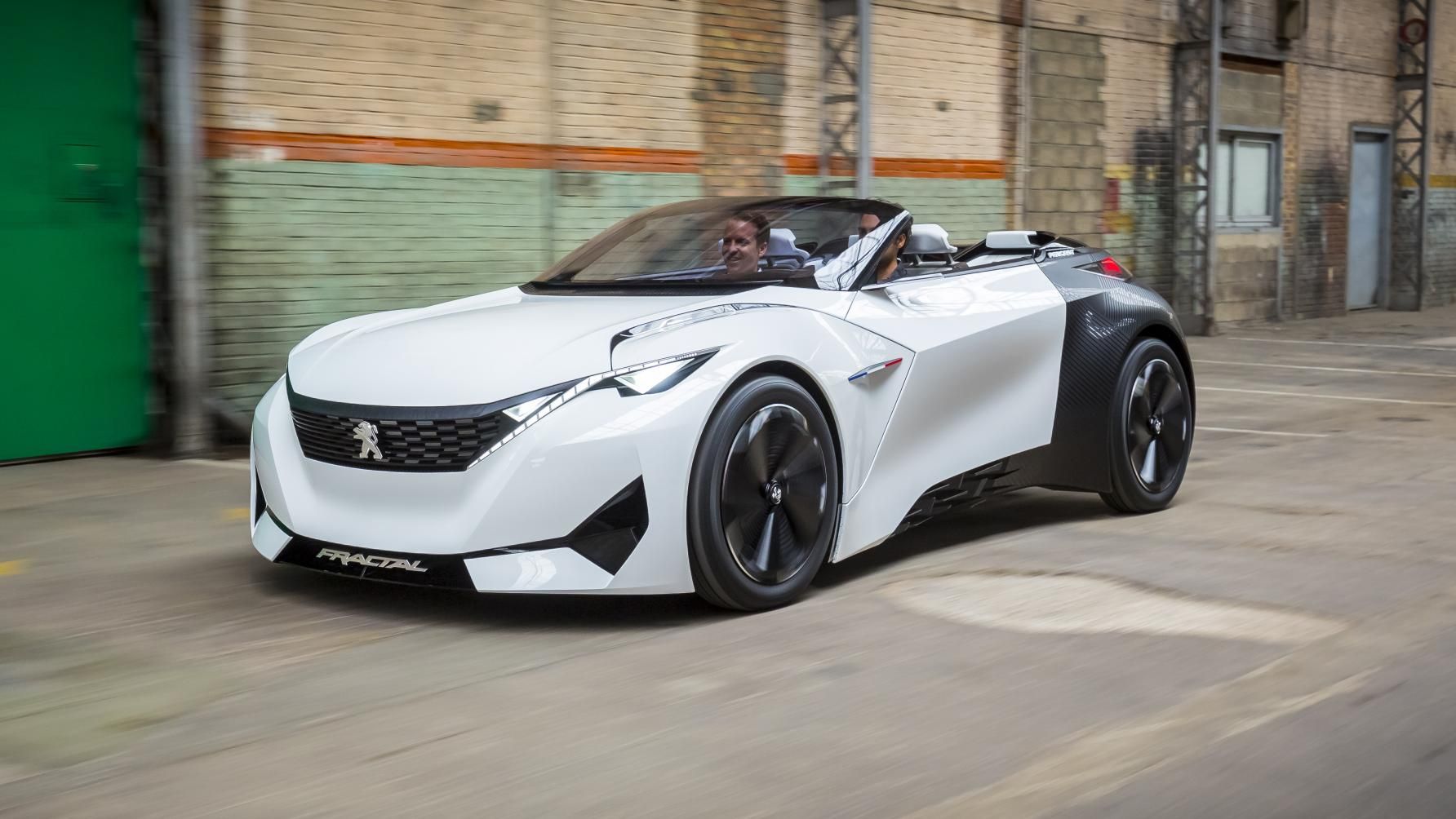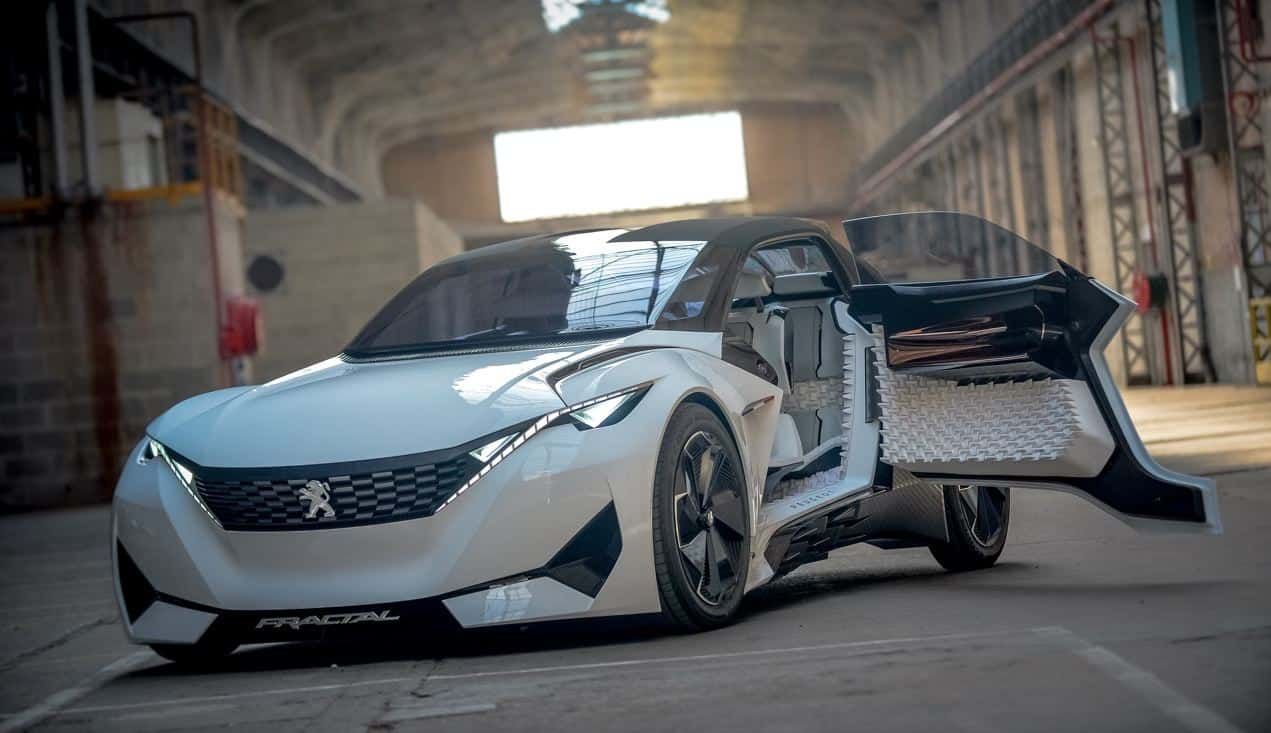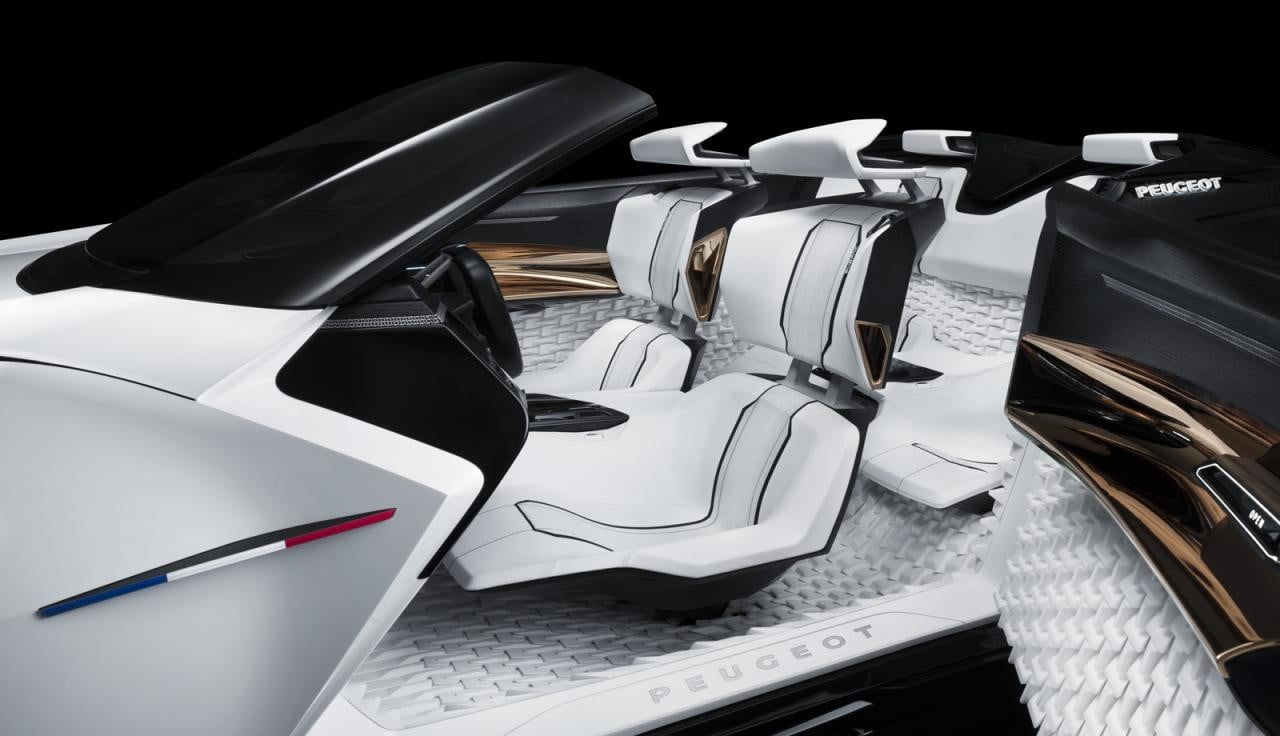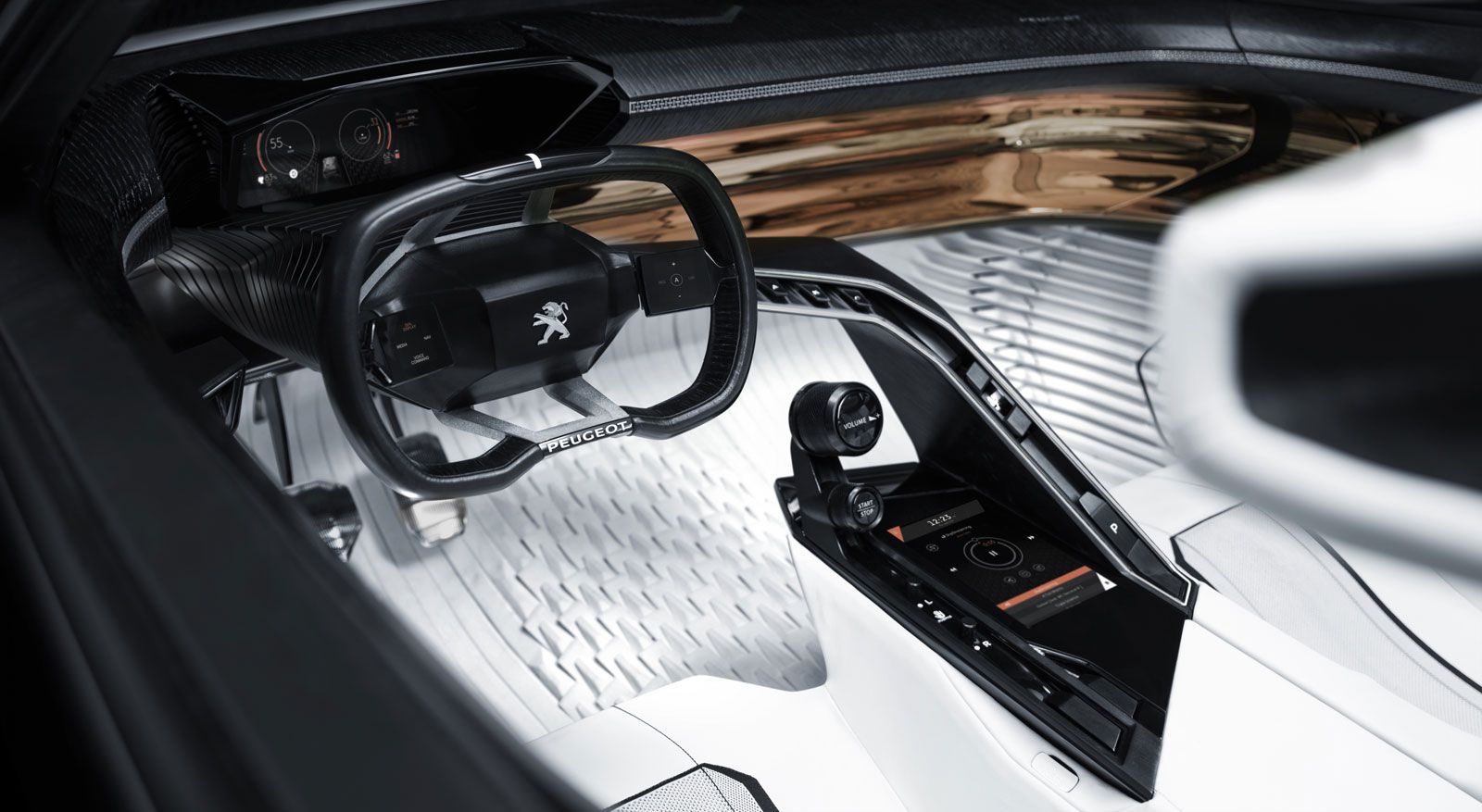Founded in 1810, Peugeot has been in the game for more than two centuries. From its humble beginnings as a steel foundry to releasing its first car in 1889, the company has come a long way and has rightfully attained 'The Oldest Continuous Car Brand' title. While many of its competitors perished, Peugeot recovered from its setbacks and delivered exceptional automobiles to the world. Fast forward to 2015, Peugeot showcased the Fractal concept at the Frankfurt Auto Show, and this gave the company its much-deserved praise.
It can be safe to say that Peugeot did some fantastic work in building this concept. Before this, there were the Onyx, SR-1, EX1, and RC Prototype. The Fractal concept was an all-electric, compact 2+2 coupe that projected how a Peugeot automobile could look, feel, and sound in the coming years. The most celebrated aspect of the car indeed was its futuristic design, which looked good and was built for optimal sports car performance. One thing that Peugeot emphasized while ideating this concept was the sound that the car made.
Viewed as a futuristic vehicle, the Fractal Concept indeed was packed with features that were way ahead of their time, and here's a look back at this marvel by Peugeot.
The Fractal's Futuristic Design
As the 4-seater was all-electric, it was expected to function much quietly to deliver a serene experience. However, considering the fact that Fractal was placed under the sports EV category, it would have been disappointing if the car didn't have a gigantic roar. To tackle this, the engineers obsessively concealed many elements on the chassis, wheels, and base of the car that made a sound similar to that of an ICE vehicle. These elements were entirely 3D printed for absolute perfection to deliver the exact tones desired by the designers. Some of these elements included the covers on the wheel hubs, the dummy air inlets on the roof and hood, and the 3D printed base of the car with small ridges that vibrated due to the air drag. Apart from these, more than 80% of the interior too was crafted using 3D-printed components.
The design was inspired by the materials and surfaces used in auditoriums and recording studios. The Fractal featured a next-generation sound system, which Peugeot claimed could create the illusion of direction with the sound, like when delivering navigation instructions. The seats of the concept featured a 'tactile' system for delivering bass sound. The car also had the ability to alter its ride height using the adjustable spring and air suspensions. In addition, a ground clearance of 4.33 inches in the city was reduced to 2.75 inches on motorways to improve aerodynamics and conserve battery life.
The Ingenious Powertrain And Safety Tech
The Fractal had an impressive range for long drives while not compromising on the power that Peugeot had promised while launching the car. Moreover, the car had a couple of unique safety features with its massive power. The two-door, four-seat concept, described as an 'urban coupé', was powered by two 170 hp electric motors, combined with a massive 339 HP output. Peugeot claimed that the concept, which had a 30kW battery, could go to a range of up to 280 miles on a single charge. The motors were fed with a lithium-ion battery pack mounted at the center of the car. The concept traversed the roads on 19-inch' Tall & Narrow' wheels and weighed merely 2,200 lbs.
The Peugeot Fractal could achieve acceleration from 0 to 60 mph in 6.8 seconds. One of the most impressive features of the Fractal concept was its digital sound signature, which alerted pedestrians and cyclists about its presence. The sound was a response to forthcoming European legislation that stated that all-electric vehicles must make some sound while driving by 2019. While incorporating this eVADER system into the Fractal, Peugeot also confirmed that it was working on the next generation of EVs.
The Minimalist And Stylish Interior
What made this sports EV even more exciting and futuristic was its stylish halo interior that came with several one-of-its-kind designs and tech elements. These components gave the car a distinct personality, making it stand out. The vehicle dived into the future with its next-generation i-Cockpit. It had a smaller steering wheel incorporated with a touchpad to control the infotainment system, along with switches to control the electric drivetrain and another touchscreen in the middle of the cabin. As the Fractal was an EV with the batteries at the base, space for where the conventional engine sat was left empty.
So, instead of opting for a larger frunk, Peugeot carved out the center and provided a singular leg space under the dash. This allowed for more legroom at the front and gave the center console a floaty structure. The car's interior took the definition of 'minimalistic' to another level and gave the vehicle an amazingly futuristic look that complemented the shiny white seats of the car. The Peugeot Fractal was undoubtedly one of the most exciting concepts that made its entry into the industry.
Though there has been no official word about its production from Peugeot, with upgrades in manufacturing technology, the 200-year-old carmaker may start it in the near future.




